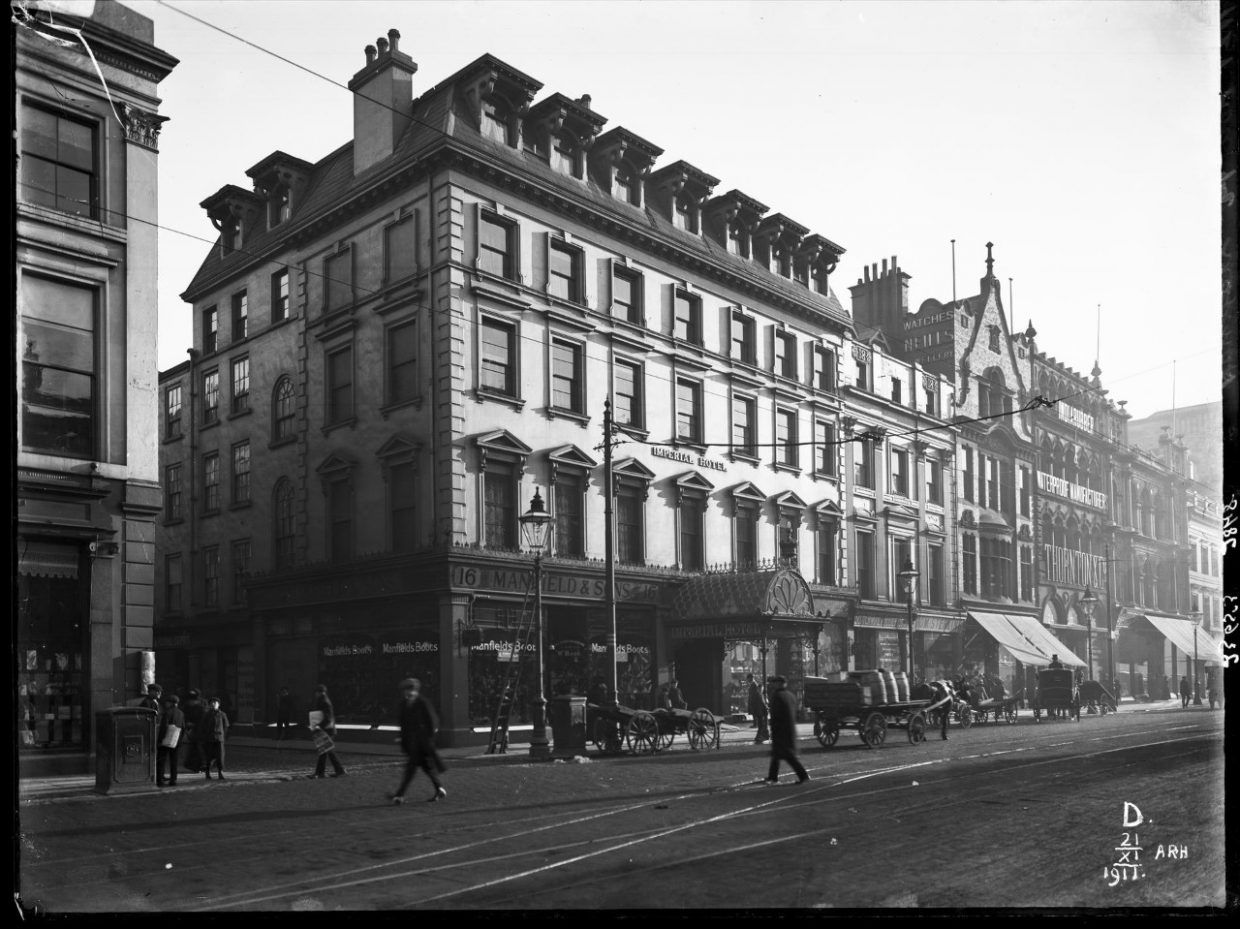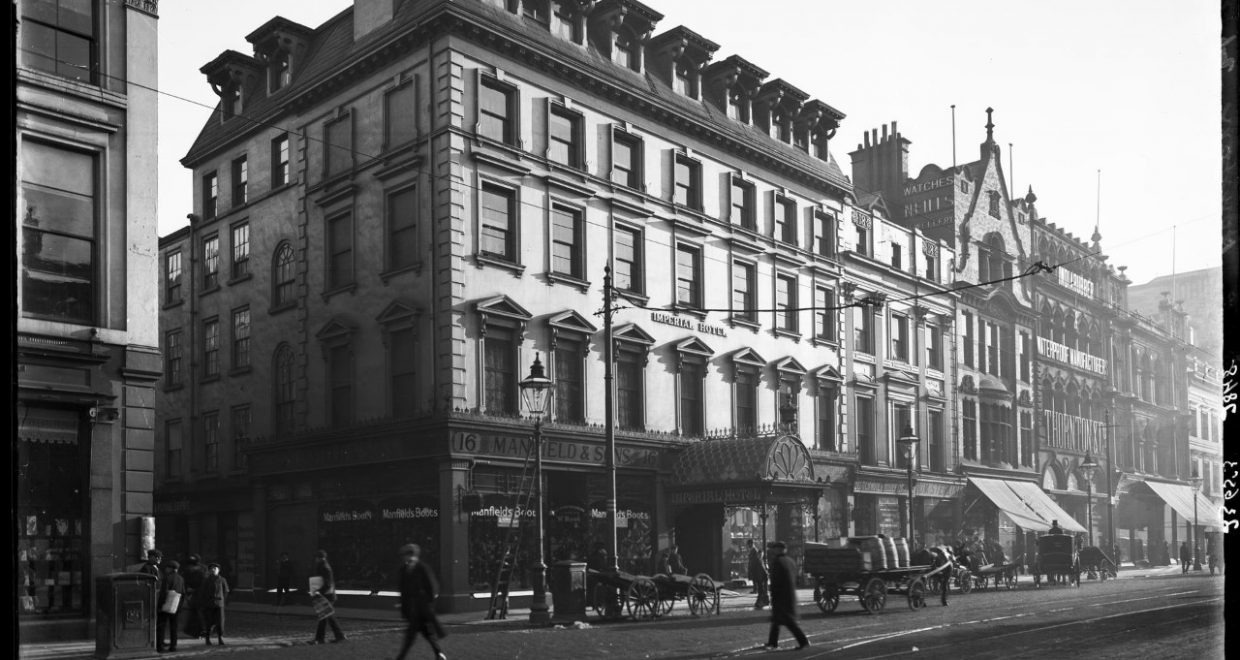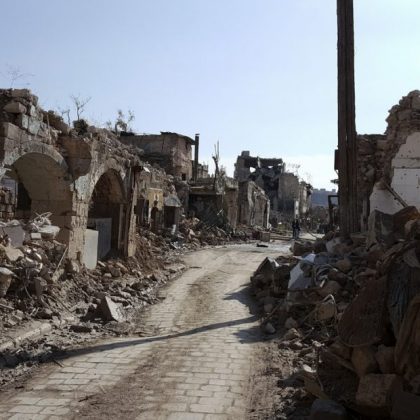Queer Belfast during the First World War
This accompanies Tom Hulme’s Irish Historical Studies article ‘Queer Belfast during the First World War: masculinity and same-sex desire in the Irish city‘
A Belfast hotel room in the summer of 1917. Vincent Cassidy, not long home from New York, mixes whiskey cocktails. Music plays in the background, and a half-used jar of cold cream lies suggestively on a dressing room table. Soldiers, officers, and civilians mingle, maybe wondering why there are no women – or maybe not. By 1am the party is dying down, and only three remain: Hugh Sheehan, a medical student of Queen’s University; Francis Kavanagh, a teenage soldier from Cork; and their host, Cassidy, an Armagh-born ‘secretary’ in his early 20s. They fall into the one bed, and things happen in the night. Some days later, Kavanagh – who is AWOL from the Dublin Fusiliers and still wearing a stolen coat – is picked up by a constable. He spills what is happening in the Imperial Hotel, and all three men are dragged before the courts. Cassidy probably wishes he had stayed in the USA: the two-month long party now becomes eighteen months in jail with hard labour.
Just around the corner on Great Victoria Street, Edgar Milligen arrives at the Great Northern Railway Station reading his daily Northern Whig. Scanning the court reports page, he spots Cassidy’s conviction and breathes a sigh of relief. Just a few months earlier he had got off a similar charge. But instead of soldiers and students, the witnesses in his case were newsboys and orphans. For several years he had picked up these most vulnerable of city dwellers in Belfast’s bustling streets, and paid them for sex in ice cream parlours, hotels, and his own country mansion. Part of the Ulster Protestant elite, he did not just escape jail but also the shame of being named in the press. In the years after he did relinquish much of his active role in civic life, but never his freedom.
Ireland’s pre-Gay Liberation history, both north and south, is often seen as a dark before the dawn. Reading the witness statements for these trials in the Public Record Office of Northern Ireland, I certainly saw evidence for that understanding: to have sex with another man brought a risk of public exposure and prosecution. But I was also struck by the possibilities and pleasures of the early 20th century city. Many of the men in these cases, even when facing down a jury, were neither ashamed nor reluctant to describe sexual and romantic relationships with other men. Exactly 100 years later, I couldn’t help feeling a sense of connection with their desires and lives. But at the same time I was troubled. Intergenerational relationships with stark power imbalances, paying poor and desperate adolescents for sex: these expressions of historical queerness did not map onto my own quite so neatly.[1]
Histories of gay rights campaigns can be attractive to us instead because we can see ourselves in past activists more clearly. We find hope in their bravery, encouragement in their victories. It is little wonder that an exciting literature around Irish demands for LGBT equality grows more every year, while the stories of everyday men like Vincent Cassidy and Edgar Milligen remain mostly untold.[2] Our unease and distance, though, might make these histories more politically important rather than less; not as a reminder of how far we have come, but as an example of how queer life is historically specific.[3] I wrote this article to take this past more seriously on its own terms, and to understand how the political, religious, and economic context of Ireland and its diaspora shaped a culture that, for historians of sexuality, will be familiar yet distinctive. It’s time to begin shining more light into this ‘dark’ – we might be surprised by what we find.
[1] For reflections on writing this sort of troubling queer history, see Rachel Hope Cleves, Unspeakable: a life beyond sexual morality (Chicago, 2020).
[2] Brilliant monographs about the gay rights period and more recent past have been written by Orla Egan, Páraic Kerrigan, and Patrick McDonagh. An exception, with its focus on the pre-1970 period, is the pioneering work of Averill Earls, such as ‘Solicitor Brown and his boy: love, sex, and scandal in twentieth-century Ireland’ in Historical Reflections/Réflexions Historiques, 46, no. 1 (2020), pp 79-94.
[3] For an entertaining introduction to this mode of thought, see Jonathan Ned Katz, Love stories: sex between men before homosexuality (Chicago, 2001).







